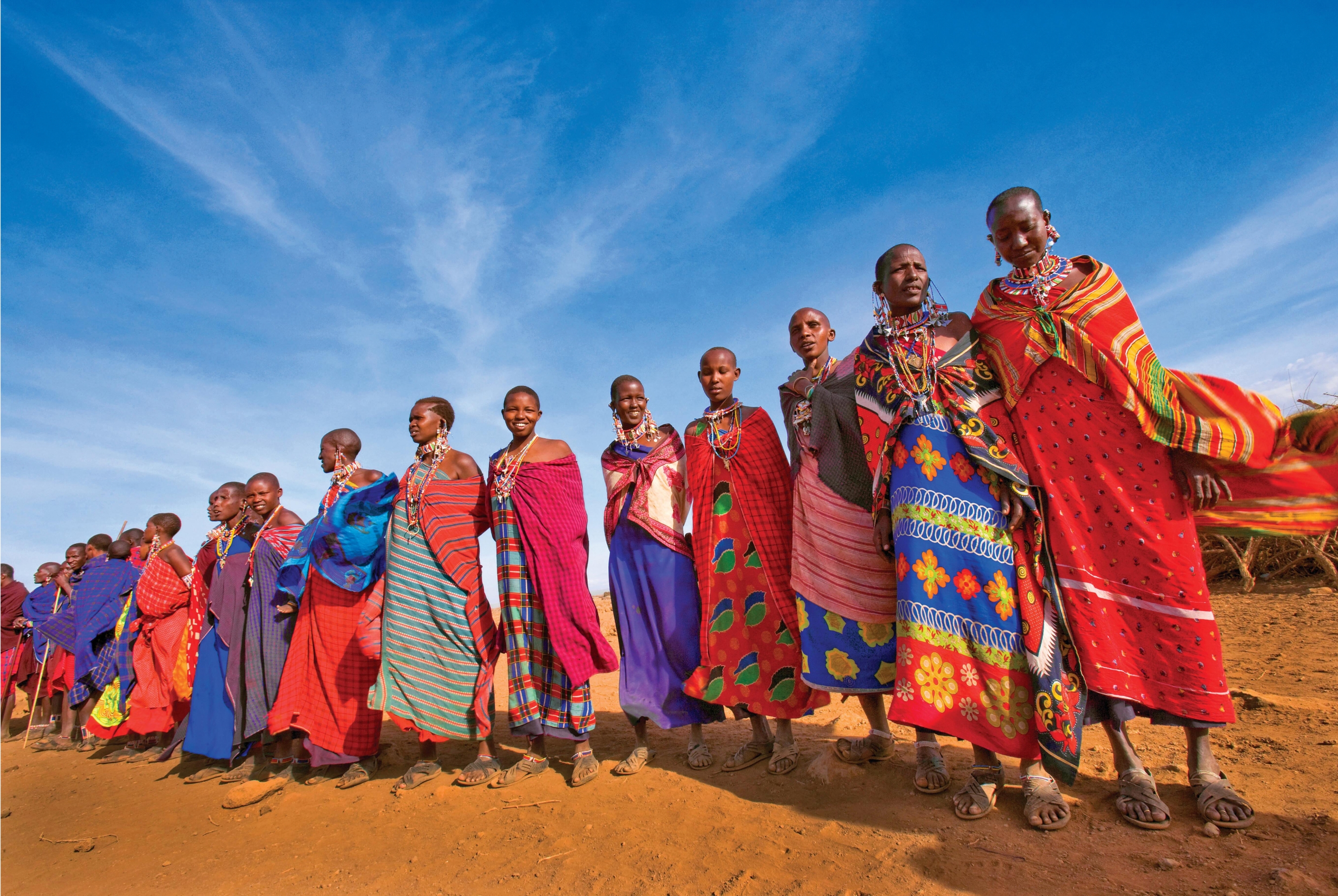You’re receiving this message because your web browser
is no longer supported
We recommend upgrading your browser—simply click the button below and follow the instructions that will appear. Updating will allow you to accept Terms and Conditions, make online payments, read our itineraries, and view Dates and Prices.
To get the best experience on our website, please consider using:
- Chrome
- Microsoft Edge
- Firefox
- Safari (for Mac or iPad Devices)
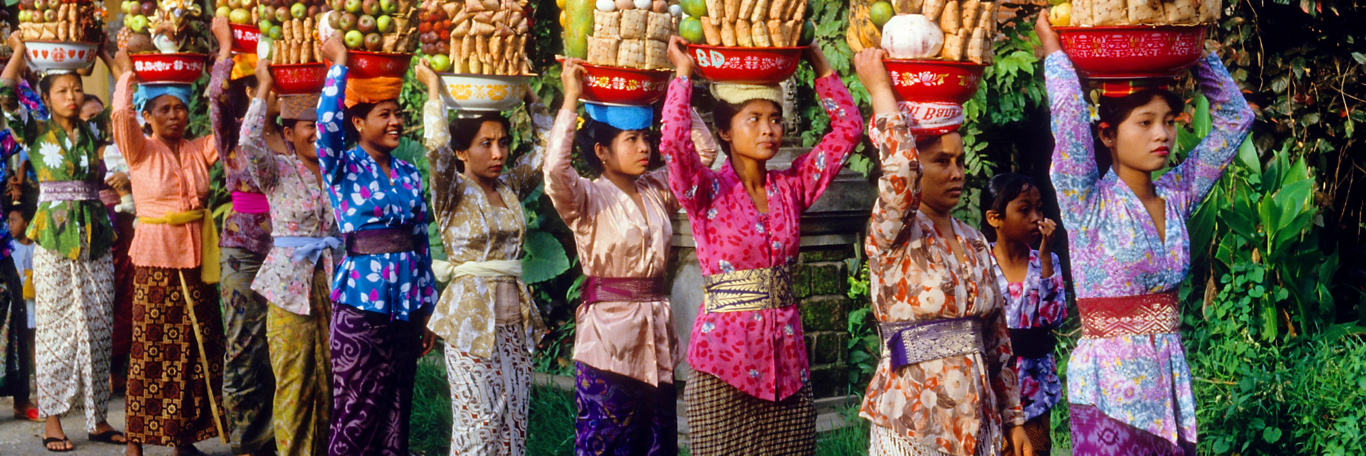
indonesia
Get the Details On Our Indonesia Adventure
Find out more about the adventure, including activity level, pricing, traveler excellence rating, included meals, and more
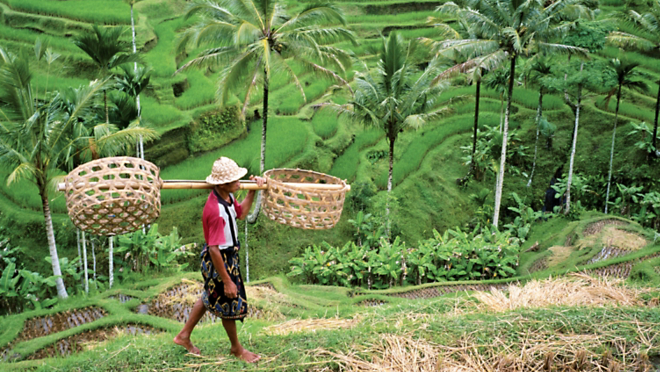
Spend 15 days in Indonesia on
Java & Bali: Indonesia's Mystical Islands
O.A.T. Adventure by Land
Adventure Details
Add Adventure
including international airfare
per day
*You must reserve the main trip to participate on this extension.
**This information is not currently available for this trip. Please check back soon.
You may compare up to Adventures at a time.
Would you like to compare your current selected trips?
Yes, View Adventure ComparisonIndonesia: Month-By-Month
There are pros and cons to visiting a destination during any time of the year. Find out what you can expect during your ideal travel time, from weather and climate, to holidays, festivals, and more.
Indonesia in November-March
November marks the beginning of Indonesia's monsoon season, which produces excess amounts of rainfall that sometimes causes road and hiking trail closures. November through March also experience high humidity and temperatures averaging between 80-90 degrees. While these months are known for the rainy weather, periods of sunshine aren't uncommon. The farther north you travel, the more likely you are to see more sunshine this time of year.
If rainy weather doesn't bother you, this might be the best time to go when there are fewer tourists visiting Indonesia. The Christmas and New Year's holidays are the only exceptions when large crowds flock to the region to experience the local festivities.
Holidays & Events
- Late January-Mid-February: Chinese New Year is celebrated throughout the region and is dedicated to deceased family members who are considered to have laid the foundation for generations to come. Locals celebrate family and new beginnings with colorful festivals, gift giving, traditional meals, and games, while others head to local temples to pray.
- Mid-March: Hari Raya Nyepi is another New Year celebrated by local Hindus in Bali.
Must See
The Hindu New Year, Hari Raya Nyepi, has widespread celebrations in Bali. Festivities take place during the first new moon in March when locals create large effigies of evil spirits that are carried through town before being burned. After, locals honor Nyepi, or the "Day of Silence." Nyepi marks the beginning of spring and is also a day used to reflect on oneself. Typically, all locals, even those that don't celebrate this New Year, use this as a day of reflection. Therefore, the streets are empty, but the energy of daily life resumes the following day.
Watch this film to discover more about Indonesia
Indonesia in April-May
The weather in April-May is less predictable, but is typically sunny with a few showers that pop up. While temperatures still average in the 80s, light breezes plus lower humidity make the warmer weather comfortable.
If you want to avoid the crowds that descend on Indonesia during the dry season, you may want to plan your visit for April. The weather is pleasant in April and you can experience the region without the interruption of large crowds. Tourists start to head to Indonesia in May, which is considered to be one of the best months to visit the region, particularly Java and Bali. This is the best time to experience the region's beaches when the skies are clear and the weather is warm.
Holidays & Events
- Mid-May: Waisak Day honors the birth, teachings, and death of Buddha.
Must See
Throughout Asia, Buddhists gather to celebrate Waisak Day. In Indonesia, the most prominent celebrations take place in Borobudur, Java where Buddhists flock to the temple, which UNESCO calls “one of the greatest Buddhist monuments in the world,” to meditate and perform ritual ceremonies. Depending on where you are, some locals celebrating this day will cut out meat from their diets for the day, and others donate money to local charities.
Indonesia in June-August
With the onset of the dry season, the summer months with their warm weather and lower humidity are the ideal time to visit Indonesia, especially Bali. In June, the country’s wildlife thrives following the rainy season, posing an excellent opportunity to trek through the forests in search of its creatures.
The entire country experiences hot, dry weather come July and August. But because the prime travel weather coincides with European school vacation, it ushers in the peak travel season when there will be crowds at the beaches and other sites.
Holidays & Events
- Early June: Occurring twice a year at varying times according to the Balinese calendar, Galungan is a holiday of feasting when Indonesian Hindus celebrate the triumph of good over evil and welcome home ancestral spirits for a visit. It is marked by rituals and offerings, such as those hung on decorated bamboo poles along the roadside.
- June: The Muslims of Indonesia celebrate Ramadan, though the specific dates vary according to the Islamic calendar, by fasting and using it as a time for contemplation and worship.
- June/July: Better known as Eid al-Fitr to Muslims in other countries, Lebaran follows Ramadan during which Indonesian Muslims commemorate the end of the fast with mass prayer gatherings, gift giving, and feasting on traditional foods.
- June/July: Running from the second Saturday of June through July, the Bali Arts Festival showcases the cultural achievements and arts of Indonesia as art troupes and artisans from neighboring islands congregate at the Denpasar Art Centre for the festival.
- August 17: Indonesians celebrate gaining their independence from the Dutch government in 1945 on Hari Merdeka, or Independence Day, with military parades and flag ceremonies. Most unique, though, are the rowdy panjat pinang games—a relic of colonized life—in which teams try to climb up greased poles for prizes placed on top.
Must See
During the wet season, animals in Indonesia’s habitats tend to be elusive, seeking shelter from the rain. But as the rains disperse, wildlife like monkeys emerge from their hiding places, making it the best season to witness the exotic species that live there.
Indonesia in September-October
September weather in Indonesia remains warm and dry like the late summer months, but the end of vacation season also means the crowds thin out, making the month a favorite time to visit.
But the rains begin to roll in over the region during October, bringing in six to seven months of wet weather. The rains can make travel through the country more cumbersome—but the country, with its tropical weather, maintains warm temperatures in the 80s year-round.
Holidays & Events
- Mid-September-early October: The Islamic New Year marks the beginning of the Islamic calendar. In Indonesia, people from varying religious backgrounds may take part in the festivities, parades, and various celebrations across the country.
- October: During the five-day Ubud Writers and Readers Festival, authors, thinkers, artists, and performers from around the globe gather together for cross-cultural dialogue and emotional live performances.
Watch this film to discover more about Indonesia
Average Monthly Temperatures
High Temp Low Temp
Indonesia Interactive Map
Click on map markers below to view information about top Indonesia experiences
Click here to zoom in and out of this map
*Destinations shown on this map are approximations of exact locations
Jakarta

Jakarta is marked by a sleek cityscape whose modern high-rises mingle with quaint suburban neighborhoods and colonial-style buildings. Indonesia’s energetic hub of more than ten million people is made up of locals who have traveled to Jakarta from all corners of the nation’s 17,000 islands—the majority of residents hail from west Java.
It is believed that Jakarta has been inhabited since the fifth century, but the city’s modern history began in the 16th century when Sunan Gunungjati, the leader of the ancient kingdom of Demak, seized the land from the Portuguese. Gunungjati named his newly captured city Jayakarta, which roughly translates to “victorious city.” During the city’s colonial period when the Dutch and English seized the land, the city’s title was changed to Batavia. In addition to Jakarta’s name change, the city’s appearance began to shift to resemble Dutch architectural styles—which included a canal system. The city became a commercial center, which lured immigrants from surrounding countries, mainly China, who moved to Batavia in search of wealth. By the mid-20th century, the city gained its independence, but it wasn’t until the whole nation of Indonesia gained its independence in 1949 that the capital reclaimed its title of Jakarta.
Explore Jakarta with O.A.T. on:
Borobudur
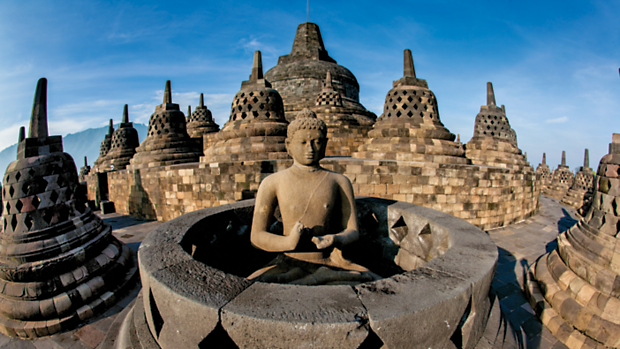
The Borobudur Temple outside of Yogyakarta is an archaeological marvel due to its immense size and intricate design, including 72 stupas and more than 500 Buddha statues. Spanning around 63 acres, Borobudur, meaning "Buddhist Monastery on the Hill," is the largest Buddhist Temple in the world and in 1991 was designated a UNESCO World Heritage Site.
The three-tiered temple was constructed between the eighth and ninth centuries by leaders of the Sailendra dynasty in Java. After the introduction of Islam, the presence of Buddhism in Java lessened and the Borobudur Temple was deserted. Centuries of volcanic ash build-up buried the vacant temple, until the beginning of the 20th century when restoration efforts began. Borobudur's resilient structure endured a bombing in 1985 and a devastating earthquake in 2006, but has since been restored to its former glory.
Annually, the temple hosts Vesak, a sacred event that draws Buddhists from around the region where religious rituals and ceremonies take place over the course of a few days. Outside of this holy event, millions of travelers visit Borobudur every year, making it one of Indonesia's most popular attractions.
Explore Borobudur with O.A.T. on:
Borneo

Densely thicketed with a lush and humid rainforest, Borneo is a nature lover’s paradise.
Like Indonesia as a whole, Borneo is a melting pot of varied ethnic and cultural backgrounds, each of whom has left a distinct mark on the island’s religious and culinary traditions. The third largest non-continental island in the world, Kalimantan—as it is known by Indonesian locals—is shared by Indonesia, Brunei, and Malaysia, with Indonesia laying claim to the island’s larger southern half. It’s also home to a thriving Chinese population, thanks to 2,000 years of robust trade routes that crisscrossed the South China Sea.
But Borneo’s most famous residents are of the non-human variety. In Borneo’s jungle—at 140 million years old, one of the oldest in the world—dwell wild orangutans, who swing from tree to tree with ease. As Asia’s only great ape and an endangered species, orangutans have a protected status on the island and are best seen in dedicated preservation areas like the Tanjung Puting National Park. Proboscis monkeys, long-limbed gibbons, and thousands of other species of flora and fauna all make their home in Borneo’s fertile rainforest, which sadly is under threat from logging and deforestation.
Explore Borneo with O.A.T. on:
Komodo Island

As a sleepy volcanic landmass, the serene mist hanging over Komodo Island hints at the island’s namesake. The Komodo dragon—a beast which can grow up to ten feet long—calls the island home, lording over its pink sands and impossibly-blue shores.
A type of monitor lizard—the word “monitor” comes from the lizard being able to stand and seemingly monitor its surroundings—the Komodo dragon has lived on the island and surrounding areas for millions of years. First described by the Dutch in the early 20th century as a 23-foot monster that could breathe fire, it was found to be much more docile than originally reported. The Komodo dragon is in many ways perfectly adapted for the isolated island life it leads.
Still, the pink sands of Komodo are among the island’s most striking features. A bacterium known as foraminifera secretes a reddish protein which mixes with soft white sand to create the light-blush color. Taken in all together, Komodo Island—pink sand, flawless turquoise waters, placid green mountains—creates a vista only the greatest of artists could have imagined.
Explore Komodo Island with O.A.T. on:
Ubud

Considered the island of Bali’s cultural and artistic heart, Ubud is a small city bursting with beauty, nature, and legend.
According to its founding tale, Ubud was established after Hindu priest Rsi Marhandya prayed at the confluence of two rivers, later the site of a sacred shrine. The city first gained notoriety as a medicine center—“ubud” is the Balinese word for medicine. In the 20th century, the people of Ubud requested the Dutch empire incorporate the city as a protectorate. Unlike many other European dominions, the Dutch largely preserved the artistic and cultural identity of Ubud, going as far as encouraging artists to relocate and promote an understanding of Bali culture worldwide. Walter Spies, a famous German painter, was among Ubud’s most famed residents.
While Ubud is the site of tranquil rice paddies and farms, the Ubud Monkey Forest brings spirituality and an appreciation of nature together. The reserve’s mission is to promote the Hindu principle of tri hata karana—“Three ways to reach spiritual and physical well-being”. These include harmony between humans, harmony between humans and nature (in part with the large monkey population) and harmony between humans and the Supreme God.
Explore Ubud with O.A.T. on:
Sanur

As the sun rises in Sanur, the ocean often gleams a bright golden-yellow, as if literally painted in light. A tranquil and quaint small town, Sanur is a place to get away, meditate, and enjoy a slower pace of life.
Yet, the recent history of Sanur is anything but tranquil. In 1906, the Dutch invaded Bali, using the town as a landing point. Sanur was the site of a confrontation with natives that resulted in over 1,000 deaths and an international crisis which eventually caused the Dutch to establish more ethical standards in the ruling of colonies. Alternately, the imperial Japanese Army also used Sanur as a landing point for their invasion of Bali during WWII.
With those bloody times decades behind them, the people of Sanur enjoy quiet peace again. Even with many highly-acclaimed local restaurants dotting its streets, it’s the sunrise—and sunset—which instills a deeper sense of happiness.
Explore Sanur with O.A.T. on:
Featured Reading
Immerse yourself in Indonesia with this selection of articles, recipes, and more
ARTICLE
Bali is making strides toward more modern ideals, including small victories for gender equality.
ARTICLE
Discover the many religions of Java and Bali—from Islam to Catholicism to Buddhism.
ARTICLE
In the sacred Monkey Forest of Ubud, the flora is full of history and the fauna is holy.
New Times, New Traditions
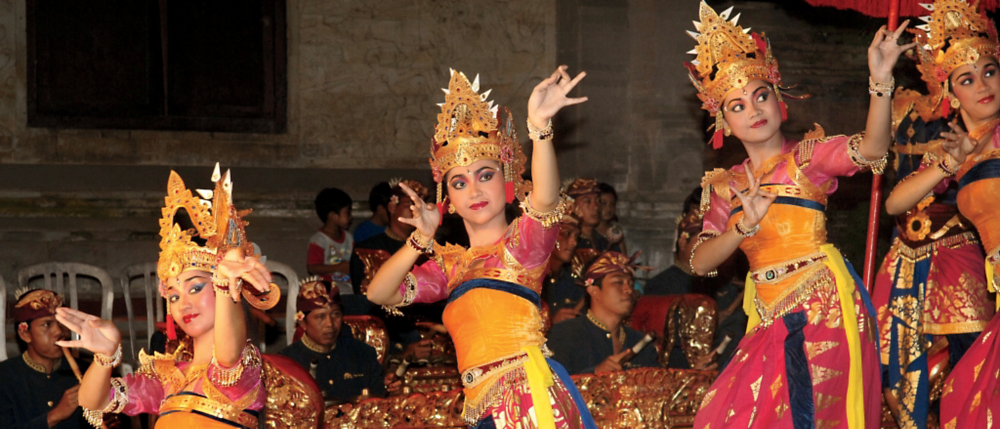
The changing roles of women on Bali
by Lyette Mercier for Overseas Adventure Travel
“Today visitors can attend all-female gamelan performances, as women have begun to take up instruments along with their other ritual duties.”
On the Indonesian island of Bali, history and tradition infuse every aspect of daily life. Bali’s unique practice of Hinduism incorporates elements of Buddhism, ancestor worship, and ancient beliefs including animism and gods and goddesses of nature. Each home has a shrine, each village has temples, and each rice paddy has a place to worship Dewi Sri, goddess of rice. Balinese Hinduism extends throughout the culture, making nearly every act, from cooking meals to making music, an expression of belief.
As tourism, democratization, and interactions with the global community influence Bali, their traditions are undergoing changes, including the growing inclusion of women in public life and performance. For centuries, Bali’s ritualized way of life included a strict division of labor between men and women. Men traditionally worked outside the home: tending cattle, working in the rice fields, making handcrafts, constructing homes and temples, and participating in the village’s local governing body, the banjar.
Women were in charge of the domestic sphere: caring for the house and children, keeping up the local temples and preparing elaborate offerings for the village’s many holidays and celebrations. Historically women’s artistic impulses have been channeled into decorations and offerings—intricate constructions of flowers, fruit, and other food given to the gods.
But in the past two decades, these traditional divisions have become less rigid. Indonesia’s 21st-century move to democratic governing has led to political and human rights gains for women, giving them more clout in the public sphere. In 2010, the High Council of Customary Villages, which rules on local laws that are often more widely followed than national laws, ruled for the first time that women could inherit property upon the death of their father or husband. The Council also altered traditional law that awarded custody of a single mother’s children to the father’s closest male relative and ruled that in divorce, a woman is entitled to half of the couple’s shared assets, whereas before she was left with nothing.
These dramatic transformations in Indonesian society began after the country’s president, General Suharto, stepped down in 1998 following 30 years of authoritarian rule. Under Suharto’s “New Order” regime, a strong central government improved Indonesia’s economy and living conditions, but it also discouraged the practice of local law and traditions in favor of a national identity and focus. Post-Suharto, as the country has transitioned to a more democratic, less-centralized form of government, the old traditions have returned, but are now adapting and changing in the face of new times and new audiences.
Tourism’s impact has also influenced transformation in traditional displays. Before Bali became a popular vacation destination, performances were enacted solely for local religious and community celebrations. Now that the beauty and artistry of their music and dance are appreciated by visitors from all over the world, these local traditions have become regular performances, separated from their sacred meaning for the first time.
An excellent example of the way customs are evolving to both include women and accommodate the rise of tourism is gamelan, an ensemble of percussion, woodwind instruments, and vocals, often accompanied by dancing and puppeteering. Each village has a gamelan, and every instrument is tuned to its specific gamelan, providing an amazing metaphor for the strength of local identity in Bali—no two gamelan groups are alike, meaning villages literally sound different.
Gamelan groups are traditionally all-male, but today visitors can attend all-female gamelan performances, as women have begun to take up instruments along with their other ritual duties. Considering the traditional importance of gamelan and the way rituals influence every aspect of Balinese life, it is not surprising that women have begun to share men’s customary roles as they also demand the same civil rights.
The changing roles of women on Bali
Keeping the Faith

Spirituality in Java & Bali
by Pamela Schweppe, from Dispatches
For Americans, living in a country where faith is a private matter and religious displays in secular spaces are uncommon, it might be difficult to imagine a country where spiritual practice is as much a part of daily life as eating, sleeping, and breathing. Indonesia is one such country, where spirituality is deeply interwoven into the fabric of everyday life.
The predominant religion in Indonesia by far is Islam, to which 88% of the population belongs. An important component of the faith is an adherence to high moral principles. In 1945, when the country was still splintered by World War II, a nationalist leader named Sukarno described Five Principles based on Islamic belief. Called Pancasila, this national philosophy (belief in one and only God, a just and civilized humanity, national unity, democracy, and social justice) was formally adopted in 1950 and is now embedded in the country’s constitution and legal system.
The Indonesian government is not an Islamic one, however. Although Indonesia became the second-largest Islamic nation in the world when it gained its independence in 1945 (and the largest in the world in 1971, when Bangladesh separated from Pakistan), the government its people created was based on a civil code rather than a religious one.
The decision to create a non-religious government may be due to the fact that Indonesia still hosts a diversity of faiths, despite the dominance of Islam. The Indonesian government officially recognizes six religions: Islam, Protestantism, Catholicism, Hinduism, Buddhism, and Confucianism. Every citizen is required to hold an identity card specifying his or her religious affiliation. Although that space may be left blank, agnosticism or atheism are not formally acknowledged.
The rise of Islam
Among these religions, Islam is a relative latecomer. The earliest settlers of the archipelago were animists, who believed that animals, plants, and even inanimate objects such as rocks are endowed with a soul. Next to arrive was Buddhism, which was imported along with material goods along the Silk Road between India and China.
How Hinduism made its way into Indonesian culture is a little less certain. Because some Sanskrit inscriptions dating to roughly the fifth and sixth centuries have been found far from the trade route, many now believe that Brahmin priests invited by developing courts imparted this new religion to the region.
While Arab traders began setting foot on Indonesian shores as early as the eighth century, Islam didn’t gain a foothold in the region until the twelfth and 13th centuries. It was embraced first by royalty, as Muslim traders began marrying into the aristocracy. As royalty converted to the religion, so did their subjects. In the 15th and 16th centuries, Islam became the state religion, and as it mixed with animist and Hindu traditions, it became a uniquely Indonesian, mystical interpretation of the faith—less strict in observance than the form that is practiced in the Middle East.
Java: Islamic—yet a religious melting pot
Home to 60% of the Indonesian population and the national capital, Jakarta, Java is also an important religious center. The island’s history as a center for Buddhism may be seen at Borobudur, the largest Buddhist temple complex in the world, located in central Java. Built more than 1,000 years ago, Borobudur predates even Cambodia’s magnificent Angkor Wat and is today a UNESCO World Heritage Site.
The influence of Hinduism throughout Java is also evidenced by the ruins of ancient monuments scattered across the countryside. For more than a millennium, Java was divided among different kingdoms. The largest and most influential of these was a Hindu kingdom, Majapahit, which reached its peak in the 15th century. As it collapsed, however, Islamic sultanates began to dominate the island.
Today, more than 90% of the inhabitants of Java are Muslim—yet, other religions continue to be observed. It is on Java that most Christian communities are located, despite persecution, such as physical attacks, the destruction of churches, and a ban on Christmas services. Hinduism has also been undergoing a revival on Java in recent years, though the number of declared adherents is still less than 1% of the island’s population. Indonesians could not even identify themselves as Hindu on their identity cards until 1962, and during that decade, many declared themselves Muslim to protect themselves. Others fled to Bali.
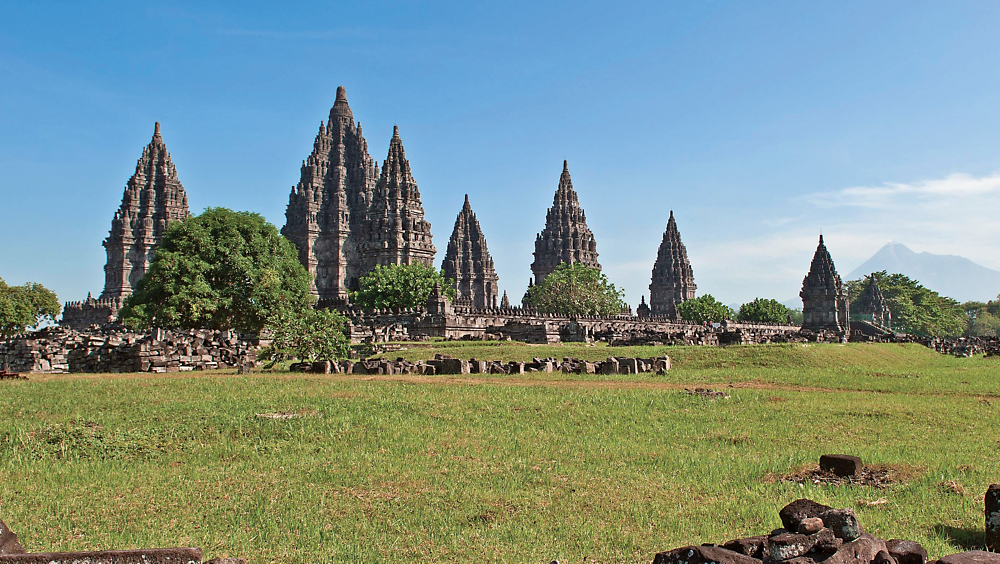
Bali: the “Island of a Thousand Temples”
Hinduism is practiced by only 3% of the population of Indonesia—and of those, nearly 95% are on the island of Bali. It would be hard to find a place on Earth where spirituality is more integral to daily life.
Even though the religion was brought to Bali from India, like Islam, the faith has evolved here to reflect local customs and culture. The Balinese version differs from Indian Hinduism in that it does not embrace the caste system, and instead of concentrating on rebirth and reincarnation, it focuses on communing with local and ancestral spirits.
Bali’s nickname is the “Island of a Thousand Temples”—yet more than 11,000 temples have officially been catalogued by the Department of Religion, and many more temples and shrines may be found in farmlands and private homes. These temples typically are open courtyards with rows of shrines and altars and are not considered sacred in and of themselves. Rather, they are designed as places where visiting gods are welcomed, bathed, and entertained on festival days. Deities can also be called down by priests.
Religious life isn’t celebrated only on festival days on Bali, however. Rituals are performed throughout the day, and rituals celebrating all of life’s major milestones—including birth, puberty, and cremation at death—connect each Balinese practitioner to his or her family, community, ancestors, and deities. It is not unusual for travelers to witness these colorful and exotic rituals performed by smiling Balinese people as they seek harmony between our world and that of the gods.

Artistic differences
In both Java and Bali, one of the most important ways religious sentiment is expressed is through the arts. In fact, the Balinese have no word for “art,” so deeply is it engrained in religious practice. A large percentage of the population participates in these artistic rituals, which take forms that are very different from those of the West.
The primary forms of artistic expression in Indonesia are dance, wayang (shadow puppetry), and music. While dance has been performed on Bali since before the island’s written history, Indonesian dance actually originated on Java more than 1,000 years ago, and inscriptions of Javanese dancers can be seen on ancient temple walls. As Islam spread over that island, however, it disappeared there.
On Bali, dance remains an important part of the local culture and is performed during festivals and other ceremonies. Although dances are sometimes performed for visitors, their primary purpose is for the gods and may act as a channel for visiting gods or demons—or as entertainment for them. Like the Balinese practice of Hinduism itself, Balinese dance derives from India but has been adapted to island folklore and its animistic history.
Religious ceremonies on the archipelago also feature gamelan music, a uniquely Indonesian form of music featuring an ensemble of drums and tuned percussion instruments, such as xylophones, chimes, and gongs. Some gamelan music also features vocalists.
Like dance, this form of music has a long history on Java, where it is rich and complex in nature. Unlike dance, however, it remains an important component of local culture and continues to be featured at religious ceremonies and popular entertainment.
By contrast, Balinese gamelan music has a brighter sound, with greater reliance on metallic instruments, such as metallophones, gongs, and cymbals. Balinese gamelan music also features more shifts in tempo and dynamics than its Javanese counterpart.
On both islands, gamelan music is used to accompany wayang, or shadow puppet performances. For these, a wide linen screen is stretched across a wooden frame atop a platform. For nighttime performances, the screen is lit by corn-husk lamps. Using wooden rods, the dalang, or puppeteer, manipulates flat, cut-out figures that are silhouetted against the screen and also serves as narrator. Because the stories he tells provide an oral history that is passed down from one generation to the next, the dalang is highly respected in Indonesian culture.
Javenese wayang is used primarily for education and entertainment. Performances are held at night—often beginning after midnight—and last until dawn. While wayang performances may be pure entertainment on Bali, it can also serve a more religious purpose. During temple festivals, the purpose of the play is to invite ancestral spirits to visit, and offerings are presented throughout the performance and beyond. These performances are held during the daytime and last up to about four hours—but never all night, as on Java.
Despite these slight variations, however, perhaps the similarities among these diverse art forms show a fundamental unity among the Indonesian people—which transcends their differences in faith.
Spirituality in Java & Bali
Playful Primates in a Holy Sanctuary

The Sacred Monkey Forest in Bali
by Phil McCluskey, from Dispatches
It is a rare experience to sit close to an animal in its natural setting. It is perhaps more unique when that animal takes the opportunity to rifle through your bag in search of an afternoon snack.
This is exactly what happens in the Sacred Monkey Forest of Ubud, Bali every day. But the long-tailed macaques scattered throughout this place—which are known locally as Wenara Wana—are forgiven for being forward with visitors: After all, they are considered holy. Monkeys are considered protectors from evil spirits here, so they are not only taken care of, but venerated.
This sanctuary, which is on the outskirts of the town of Ubud, is home to hundreds of these animals—and it offers travelers a truly distinctive experience. Although it was once an afterthought on the traveler trail of Ubud, the Forest is now one of its stars. In 1986, an average of 800 people a month visited the forest; now it is not uncommon for 15,000 people to come to see this simian spectacle.
This is all a result of a religious ethos on the island: that of Balinese Hinduism. This strain of the religion is different from its northern counterparts. It is an amalgam of traditional Hinduism, Animism, Buddhism, and ancestor worship. While their religion dictates respect for the animals, locals have a conflicted view of their primate neighbors: they revere them because of their religious standing, but they grumble at their larcenous tendencies and their proclivity for crop destruction.
Though the trees are wild, the area is full of reminders of the history of human occupation here. There are three different temples: the Pura Dalem (otherwise known as the death temple), the Pura Prajapati (cremation temple), and the Bathing Temple. You’ll find the monkeys all over the complex, yet it is indeed a place for people—the temples are seen as an ideal place to pray to ancestors, give offerings to the spirits of trees, and generally reconnect with one’s spirituality.
The nearby village of Padangtegal is responsible for taking care of the Forest, not only for its value as an attraction but because the villagers see it as a moral imperative. Their efforts align with the Tri-Hita Karana, a Hindu doctrine which states, among other things, that since nature provides for humanity, that we have a duty to preserve it. They see the forest as an example of humans and nature coexisting in harmony.
It’s one of the reasons the villagers are so focused on conservation—both of the man-made temples and of the environment surrounding them. The former have been meticulously restored when necessary, as the soft volcanic rock that was used to create them originally tends to break down in the tropical climate of Bali. The preservation of the ecosystem is also taken very seriously by members of the Padangtegal community. In 1990, seeing the impact of increased tourism, they established the Wenara Wana Padangtegal Managerial Committee as stewards of this jungle gem. The committee has been essential to maintaining not only the environmental integrity of the Forest, but its cultural relevance as well.
Today, the Forest continues to attract travelers from around the world to see a band of monkeys swing and frolic in this sacred place. If you go, you should be able to get up close to them, as they are quite at home in human company. Be sure to check your pockets for food beforehand, though—because while these monkeys are holy, they are also hungry.
The Sacred Monkey Forest in Bali
Traveler Photos & Videos
View photos and videos submitted by fellow travelers from our Indonesia adventures. Share your own travel photos »
